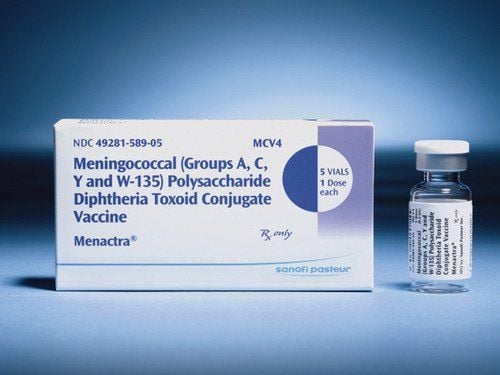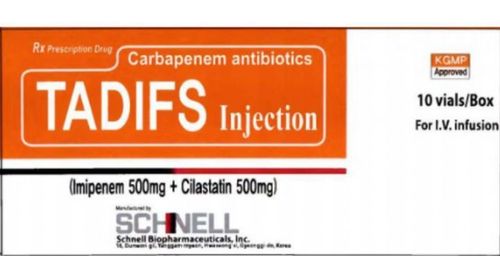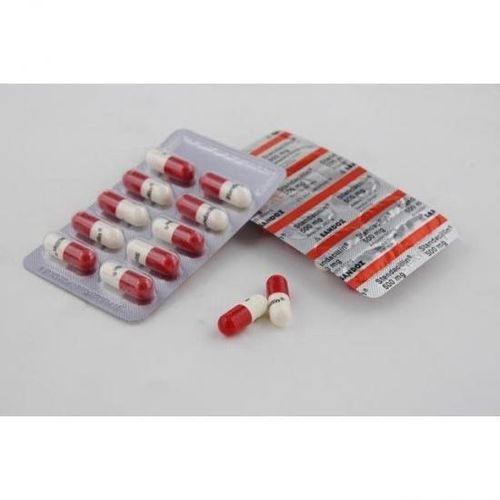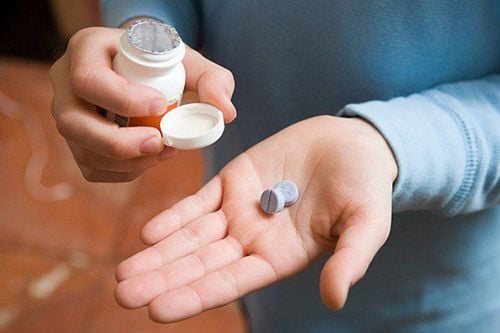This is an automatically translated article.
Nefitaz drug is used by intramuscular or intravenous injection to treat bacterial infections such as meningitis, pneumonia, abdominal infections,... When using Nefitaz, patients need to strictly follow the regimen. doctor's treatment plan to ensure safety and early effectiveness.
1. What is Nefitaz?
Nefitaz belongs to the group of anti-inflammatory and anti-parasitic drugs, used for urinary tract infections, meningitis, abscesses and some other inflammatory conditions. Nefitaz drug originated from India, is now widely available in Vietnam as a prescription drug.Nefitaz is prepared in the form of a powder for injection with the main ingredient being Ceftazidime with a content of 1g. In addition, the drug Nefitaz also has a combination of other excipients, helping to improve the effectiveness of the main active ingredient.
2. What are the effects of Nefitaz?
2.1. Uses of the main active ingredient Ceftazidime Ceftazidime is a bactericidal agent, which inhibits the synthesis of enzymes in the bacterial cell wall. In general, Ceftazidime is stable to most bacterial beta-lactamases, with the exception of Bacteroides enzymes. According to the study, Ceftazidime is sensitive to some strains of Gram-negative bacteria resistant to Aminoglycosides and Gram-positive bacteria resistant to Cephalosporins as well as some other Ampicillins.
Ceftazidime active ingredient in Nefitaz has a broad antibacterial spectrum as follows:
Some Gram-negative aerobic bacteria such as E.Coli, Pseudomonas, Haemophilus influenzae, Salmonella, Shigella, Klebsiella, Proteus,... Moraxella catarrhalis strains, Pneumococcus, Streptococcus viridans, beta-hemolytic Streptococcus. Some strains of anaerobic Gram-positive bacteria. Ceftazidime belongs to the 3rd generation Cephalosporin antibiotic group, has the following pharmacokinetic properties:
Absorption: Ceftazidime is not absorbed from the gastrointestinal tract, so it is usually used by intramuscular or intravenous injection. Distribution: It is estimated that about 10% of Ceftazidime is bound to plasma proteins. The drug has the ability to penetrate later into the tissues and peritoneal fluid, and can cross the placental barrier and be excreted into breast milk. Metabolism and Elimination: Ceftazidime is not metabolized and is excreted mainly in the urine after about 24 hours. Only less than 1% of Ceftazidime is excreted in the bile. 2.2. Indications - Contraindications to the use of Nefitaz Currently, Nefitaz is used by doctor's prescription to treat the following cases:
Sepsis. Meningitis. Lung abscess. Pneumonia, lower respiratory tract infection. Urinary tract infection. Skin and soft tissue infections. Infections in people with weakened immune systems. Bone, joint, hepatobiliary, gastrointestinal and abdominal infections. Gynecological infections. Central nervous system infections. In some specific cases below, it is necessary to avoid using Nefitaz without a doctor's prescription:
People with a history of allergy or hypersensitivity reaction to the active substance Ceftazidime or any antibiotic of the Cephalosporin group . Nefitaz is relatively contraindicated in pregnant patients or nursing mothers.
3. How should Nefitaz be used effectively?
Nefitaz drug is prepared in the form of a powder for injection, which can be administered by intramuscular or intravenous injection, depending on the doctor's prescription. Typically, a deep intramuscular injection or an intravenous infusion of Nefitaz will be administered in the lateral thigh or upper quadrant of the buttocks. Here are instructions for mixing Nefitaz powder for injection according to medical procedures:
Solution for intramuscular injection: Mix 1g of Ceftazidime with 3ml of distilled water for injection or 0.1% or 0.5% lidocaine hydrochloride solution. Solution for intravenous injection: Mix 1g of Ceftazidime with 5% dextrose or 0.9% sodium chloride solution or 10ml of distilled water for injection. Solution for infusion: Mix 1g of Ceftazidime with the same solutions as in intravenous injection, but the concentration should be adjusted from 10 to 20 mg / ml (corresponding to 1 - 2 g of Ceftazidime in 100 ml of solvent). After reconstitution, patients can take Nefitaz at the following general recommended dosage:
Adults: Inject 1g / 8 hours / time or 2g / 12 hours / time by intramuscular or intravenous route. In case of impaired liver function, no dose adjustment is required. Pediatric patients: Intravenous dose of 30mg/kg body weight/ time every 12 hours for children from 0-4 weeks old, injection 30-50mg/kg body weight every 8 hours (maximum 6g/day) for children from 1 months - 12 years old. Patients with renal failure: Inject 1g/ 12 hours/time (creatinine clearance from 50 - 31ml/min); dose 1g/24 hours/time (creatinine level from 30-16ml/min); dose 500mg / 24 hours / time (creatinine level from 15 to 6ml / min). Elderly: Do not use more than 3g Ceftazidime/day, especially people over 70 years old. During injection or infusion of Nefitaz, the patient should be closely monitored by a physician. Avoid self-medicating or adjusting the dose without the approval of your healthcare provider.
4. What side effects does Nefitaz cause when used?
During the treatment of infectious conditions with Nefitaz, patients may experience some adverse side effects such as hematologic changes, gastrointestinal disturbances or hypersensitivity reactions (pruritus, urticaria). , erythema, difficulty breathing, allergies, anaphylaxis). Some patients may also experience other side effects.
Ideally, when any reaction occurs while taking Nefitaz, you need to tell your doctor soon. Timely detection and treatment of symptoms related to Nefitaz will help patients prevent other dangerous complications.
5. Notes and cautions when using Nefitaz
In order to ensure the safety and effectiveness of treatment with Nefitaz, you should note the following:
Use Nefitaz with caution in people with a history of hypersensitivity to penicillins or cephalosporins. There is a risk of cross-reactivity between Cephalosporins and penicillins. Risk of pseudomembranous colitis with Nefitaz. A reduction in the total daily dose of Nefitaz should be considered for patients with renal impairment. Using Nefitaz in high concentrations has a risk of senility, convulsions, neuromuscular excitability and loss of balance. Nefitaz may reduce the activity of Prothrombin in patients with malnutrition, liver / kidney failure. Caution should be exercised when treating with Nefitaz in patients with a history of dysentery or some other gastrointestinal disease. Nefitaz should only be used by pregnant women and nursing mothers in case of absolute necessity. Check the quality of the powder for injection, if there are signs of impurities, discoloration or watery, it should be discarded immediately. Check the shelf life of Nefitaz before using it to prevent the risk of using it past the expiration date. Tell your doctor about the list of medicines you are taking, including dietary supplements, supplements, herbs, vitamins,... Nefitaz may antagonize Chloramphenicol, so caution should be taken when using this medicine. combination of these two drugs. Above is all information about Nefitaz drug, patients need to carefully read the instructions for use, consult a doctor / pharmacist before using. Note, Nefitaz is a prescription drug, patients need to use the drug as prescribed by the doctor, absolutely do not self-treat at home.













